Anaesthetic Complications in Immediate Postoperative Period during Ambulatory Paediatric Surgery at the National Hospital of Zinder in Children aged 0 to 5 years
Article Information
Magagi Amadou1*, Boukari Mahamane Bawa2, Maikassoua Mamane3, Habou Oumarou4, Rabiou Maman Sani5
1Department of Anaesthesia and Intensive Care of the National Hospital of Zinder, University of Zinder, Niger
2Department of Anaesthesia and Intensive Care of the National Hospital of Niamey, Abdou Moumouni University of Niamey, Niger
3Department of Anaesthesia and Intensive Care of the Reference Hospital of Maradi, Dan Dicko Dankoulodo University of Maradi, Niger
4Paediatric surgery department of the national hospital of Zinder, University of Zinder, Niger
5Neurosurgery Department of Zinder National Hospital, University of Zinder, Niger
*Corresponding Author: Magagi Amadou, Faculty of Health Sciences, University of Zinder, National Hospital of Zinder, Department of Anaesthesia and Intensive Care, Niger
Received: 06 January 2022; Accepted: 12 January 2022; Published: 31 January 2022
Citation: Magagi Amadou, Faculty of Health Sciences, University of Zinder, National Hospital of Zinder, Department of Anaesthesia and Intensive Care, Niger
Share at FacebookAbstract
Introduction
Anaesthesia is a field procedure. Paediatric anaesthesia requires vigilance and rigour at all stages. It must be carried out in an adapted structure by a team accustomed and updating its knowledge. What complications of paediatric anaesthesia in outpatient surgery?
Objective
Evaluation of immediate postoperative complications of paediatric anaesthesia in outpatient surgery.
Patients and method
Prospective, descriptive and analytical study of 160 cases of outpatient surgery performed at the national hospital of Zinder over six months from 1 January to 30 June 2018. Included were children aged 01 month to 05 years operated during outpatient surgery. The variables were epidemiological data, ASA class, type of anaesthesia, operative indications and patient outcome.
Results
During the study period 160 anaesthesias were performed. The mean age of the patients was 27.44 months with extremes from 01 month to 60 months. The sex ratio was 3.8 in favour of boys. ASA I class represented 80% of the patients. General anaesthesia with intubation was the technique of choice in 82.50%. The drugs frequently used were ketamine, propofol, halothane and fentanyl. The main operative indication was hernia in 63.12% of cases. The complications observed were bursal haematoma (06.87%), respiratory complications (03.12%) and hyperthermia (01.25%) of cases. The evolution was favourable for all patients and no deaths were recorded.
Conclusion
Paediatric anaesthesia for outpatient surgery generates fewer complications if it is carried out in a
Keywords
Anaesthesia, Paediatric surgery, Ambulatory, Complications
Anaesthesia articles; Paediatric surgery articles; Ambulatory articles; Complications articles
Anaesthesia articles Anaesthesia Research articles Anaesthesia review articles Anaesthesia PubMed articles Anaesthesia PubMed Central articles Anaesthesia 2023 articles Anaesthesia 2024 articles Anaesthesia Scopus articles Anaesthesia impact factor journals Anaesthesia Scopus journals Anaesthesia PubMed journals Anaesthesia medical journals Anaesthesia free journals Anaesthesia best journals Anaesthesia top journals Anaesthesia free medical journals Anaesthesia famous journals Anaesthesia Google Scholar indexed journals Paediatric surgery articles Paediatric surgery Research articles Paediatric surgery review articles Paediatric surgery PubMed articles Paediatric surgery PubMed Central articles Paediatric surgery 2023 articles Paediatric surgery 2024 articles Paediatric surgery Scopus articles Paediatric surgery impact factor journals Paediatric surgery Scopus journals Paediatric surgery PubMed journals Paediatric surgery medical journals Paediatric surgery free journals Paediatric surgery best journals Paediatric surgery top journals Paediatric surgery free medical journals Paediatric surgery famous journals Paediatric surgery Google Scholar indexed journals Ambulatory articles Ambulatory Research articles Ambulatory review articles Ambulatory PubMed articles Ambulatory PubMed Central articles Ambulatory 2023 articles Ambulatory 2024 articles Ambulatory Scopus articles Ambulatory impact factor journals Ambulatory Scopus journals Ambulatory PubMed journals Ambulatory medical journals Ambulatory free journals Ambulatory best journals Ambulatory top journals Ambulatory free medical journals Ambulatory famous journals Ambulatory Google Scholar indexed journals Complications articles Complications Research articles Complications review articles Complications PubMed articles Complications PubMed Central articles Complications 2023 articles Complications 2024 articles Complications Scopus articles Complications impact factor journals Complications Scopus journals Complications PubMed journals Complications medical journals Complications free journals Complications best journals Complications top journals Complications free medical journals Complications famous journals Complications Google Scholar indexed journals quality of life articles quality of life Research articles quality of life review articles quality of life PubMed articles quality of life PubMed Central articles quality of life 2023 articles quality of life 2024 articles quality of life Scopus articles quality of life impact factor journals quality of life Scopus journals quality of life PubMed journals quality of life medical journals quality of life free journals quality of life best journals quality of life top journals quality of life free medical journals quality of life famous journals quality of life Google Scholar indexed journals Postoperative Period articles Postoperative Period Research articles Postoperative Period review articles Postoperative Period PubMed articles Postoperative Period PubMed Central articles Postoperative Period 2023 articles Postoperative Period 2024 articles Postoperative Period Scopus articles Postoperative Period impact factor journals Postoperative Period Scopus journals Postoperative Period PubMed journals Postoperative Period medical journals Postoperative Period free journals Postoperative Period best journals Postoperative Period top journals Postoperative Period free medical journals Postoperative Period famous journals Postoperative Period Google Scholar indexed journals Anaesthetic articles Anaesthetic Research articles Anaesthetic review articles Anaesthetic PubMed articles Anaesthetic PubMed Central articles Anaesthetic 2023 articles Anaesthetic 2024 articles Anaesthetic Scopus articles Anaesthetic impact factor journals Anaesthetic Scopus journals Anaesthetic PubMed journals Anaesthetic medical journals Anaesthetic free journals Anaesthetic best journals Anaesthetic top journals Anaesthetic free medical journals Anaesthetic famous journals Anaesthetic Google Scholar indexed journals hyperthermia articles hyperthermia Research articles hyperthermia review articles hyperthermia PubMed articles hyperthermia PubMed Central articles hyperthermia 2023 articles hyperthermia 2024 articles hyperthermia Scopus articles hyperthermia impact factor journals hyperthermia Scopus journals hyperthermia PubMed journals hyperthermia medical journals hyperthermia free journals hyperthermia best journals hyperthermia top journals hyperthermia free medical journals hyperthermia famous journals hyperthermia Google Scholar indexed journals
Article Details
1. Introduction
Anaesthesia is an act that can be performed in any field. The anaesthesia of a child, whatever the type of intervention planned and the pathologies, must be carried out in an adapted structure and by experienced personnel. The physiological, anatomical and pharmacological particularity of the child makes this anaesthesia a challenge and requires rigour and vigilance. Complications can occur at any time during the course of this anaesthesia and in the postoperative period. In this study, we present the complications that occurred during paediatric outpatient surgery. The main aim of this study was to assess the quality of paediatric anaesthesia for outpatient surgery.
2. Patients and Methods
This was a prospective, descriptive and analytical study of 160 cases of outpatient surgery from 1 January to 30 June 2019, a period of six months. The study took place at the national hospital of Zinder. Created in 1953, it is the main regional reference centre for paediatric surgery. It had five functional operating theatres (paediatric, urological, visceral, ortho-traumatological, ophthalmological). The target population consisted of all patients admitted to the hospital for surgery. Patients aged between 01 month and 05 years who underwent outpatient surgery were included. Patients under 1 month and over 5 years of age were not included. The variables studied were age, sex, surgical indication, history, origin, type of anaesthesia, ASA class, and surgical complications. The data were collected from the anaesthesia consultation form, the patient file, and the questioning of the family during the anaesthesia consultation. Data analysis was done by epi info software SPSS.
3. Results
During the study period 160 anaesthetics were performed. The mean age of the patients was 27.44 months with extremes from 01 month to 60 months. The age group 01 month to 36 months was the most affected with 72.12% of cases, i.e. 125 patients. We recorded a male predominance with 79% of boys against 21% of girls, the sex ratio was 3.8 in favour of boys. Hernia or swelling of the umbilical region was the main reason for consulting patients. Hernia repair was the main indication for surgery with 101 cases, i.e. 63.12%. Umbilical hernia was the first indication for hernia surgery with 37.50%. The cure of a hydrocele was the second most common indication with 23 cases, i.e. 14.37%.
We recorded 02 cases (01.30%) of medical history and 04 cases (02.50%) of surgical history. The history of hereditary disease represented 04 cases and the notion of consanguinity was found in 59 cases or 36.87%. Eight (08) cases of a history of hernia in the siblings were recorded.
The patients were ASA I in 128 cases (80%) versus 32 cases (20%) ASA II.
General anaesthesia (GA) with orotracheal intubation was the most common technique with 78 cases or 48.75%. General anaesthesia by mask represented 54 cases or 33.75%. Locoregional anaesthesia was used in only 17.50% or 28 cases. During the course of the anaesthesia and / or post-operative complications were observed. The immediate post-operative complications were summarised in the table below.
Bursal haematoma was the main complication followed by respiratory distress. Seventeen patients had late surgical complications. Contralateral hernia was observed in 05.62% of patients, i.e. 09 cases. Overall, the evolution was favourable, with no cases of death recorded.
4. Discussion
Few works existed on the anaesthesia of the child for ambulatory surgery in Africa and especially in Niger. The average age of our patients was 27.44 months with a minimum age of 01 month and a maximum of 60 months. Mejdahl and colleagues [21] in Pakistan on an outpatient surgery involving 368 cases, found a mean age of 6 months with extremes of 04 months and 15 years. For Audry and colleagues in [15,19] France at the CHU of Montpellier on 149 cases of paediatric outpatient surgery recorded a mean age of 29 months where the minimum age was 08 days and the maximum was 15 years. As for Taiwo and colleagues [1] in Ilorin, Nigeria on a study of 449 cases noted a mean age of 37.6 months with a minimum age of 20 days and a maximum of 15 years. It was found that our figure was closer to those of Taiwo and Audry. From these studies it appeared that age was no longer a barrier to anaesthesia in paediatric outpatient surgery thanks to the progress made both in technique and in postoperative analgesia. We recorded a predominance of 70.4% versus 20.6% with a sex ratio of 3.6. These figures were close to those of Taiwo, Audry and Mejdahl who found a sex ratio of 4.3, 2.3 and 3.6 respectively. This male predominance could be explained by the existence of pathologies that only concern boys such as phimosis, testicular migration anomalies, and inguino-scrotal hernia. In our series, more than half (78.80%) of the patients were from the urban community of Zinder, where the anaesthesia was performed. The same observation was made by Audry [15,19] with 89%, Taiwo [1] with 84%. Among the antecedents, consanguinity was the most common with 36.87%. This consanguinity could be explained by consanguineous marriage in Niger. Umbilical hernia was the main indication for surgery observed with 37.5% followed by hydrocele with 14.37%. For Taiwo's team [1], hernias and hydrocele represented 71.2%; cryptorchidism 08.7%. In Audry's series [15,19] cryptorchidism and hydrocele accounted for 55.8% followed by hernias with 34%. Mejdahl [21] reported hernia at 39.7%, hydrocele at 18.5% and cryptorchidism at 12.5%. In our study general anaesthesia was the technique of choice in 82.50% against 17.50% of loco-regional anaesthesia. The same observation was made by Medjhal [21] with 92% of general anaesthesia against 08% of locoregional. For Audry [15,19] general anaesthesia occupied 90% of cases against 10% for locoregional. It was found that general anaesthesia with orotracheal intubation was the technique of choice for this type of surgery. Complications in the immediate postoperative period were bursal haematoma (06.78%) followed by respiratory complications (05 cases), hyperthermia and convulsion. For Mejdhal [21], bursal haematoma represented 08% and hyperthermia 01.48%. Audry [15,19] recorded 03 cases of bursal haematoma and no other immediate complications.
In our case, the hyperthermia could be explained by malaria, a very frequent endemic disease in Niger, especially in the rainy season. In our series, the medium and long term complications that we observed were the appearance of contralateral hernia for 5.62%, i.e. 09 cases, infection for 1.87%, i.e. 03 cases and one case of cryptorchidism. The same observation was made by Mejdahl [21] and colleagues who recorded 02 cases of recurrence, Audry [15,19] found 05 cases of hernial recurrence. We had recorded no cases of death, the same result was observed by authors like Medjahl, Audry, Taiwo [1,15,19,21]. These results proved that anaesthesia for ambulatory surgery had less postoperative complications and a low morbidity rate provided that it was performed in an adapted structure and by a team used to putting the little one to sleep.
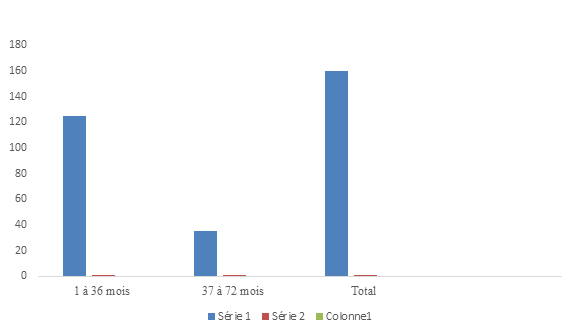
Figure 1: Distribution of patients by age group
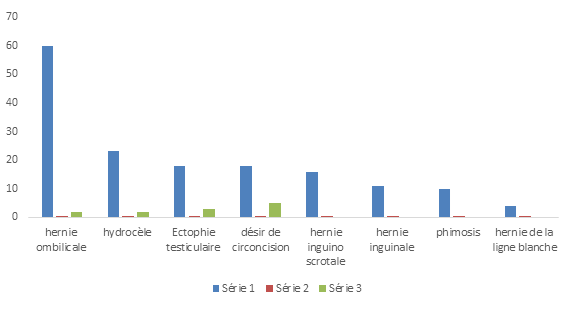
Figure 2: Operative indicators
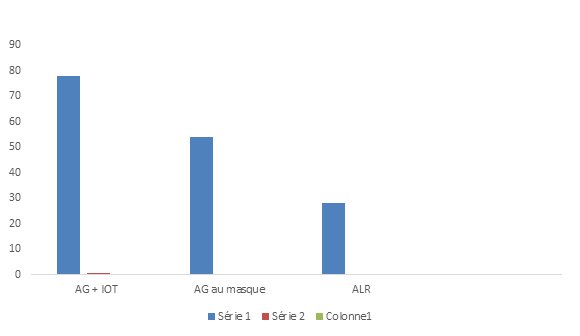
Figure 3: Type of anesthesia
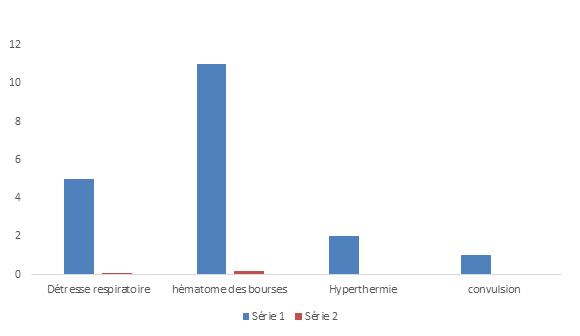
Figure 4: Immediate postoperative complications
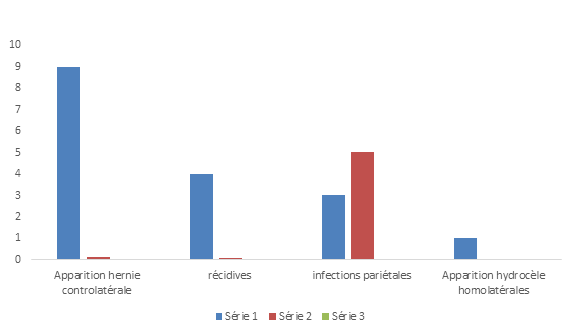
Figure 5: Medium term surgical operations
5. Conclusion
Anaesthesia for outpatient surgery in children aged one month to five years had a good prognosis. This anaesthesia generated fewer complications if it was performed in an adapted structure and by a team used to taking care of the child. Practised in ambulatory surgery, paediatric anaesthesia contributes to the decongestion of the department in view of the limited number of beds and the increasing number of patients waiting for surgery. This technique should be popularised in our hospitals in the limited time available.
Conflict of interest for each author
The authors declare no conflicts of interest.
Authors' contributions
All authors contributed to the development of this study and declare that they have read and approved this manuscript.
References
- Abdu RLO, Adeniran JO, Nasir AA, et al. Pediatric day case surgery. Ann. Afr. Med 8 (2009): 163-167.
- Balde I, Doumboya N, Diallo A, et al. Panorama of pediatric surgery in Africa. Med Afr Noire 48 (1996): 61.
- Brennan LJ. Modern day-case anaesthesia for children. Br J Anaesthesia 83 (1999): 91-103.
- Bryson GL, Chung F, Crowe MJ, et al. Patient section in ambulatory anaesthesia an evidence bese review, part 2. Can J Anesth 51 (2004): 782-794.
- Busson O, Doussin A, Sourty - Le - Guellec. Outpatient surgery, comparison France and United States. Credes (2000): 20.
- Busson O, Doussin A, Sourty - Le - Guellec, Estimation du potentiel de développement de la chirurgie ambulatoire. Credes 5 (2000): 54.
- Camboulives J, Pauto S. Anesthesia of infants and children. EMC (anesthesia - resuscitation) 20 (1996): 25.
- Chobli M, Adnet P. Anesthetic Practice in Sub-Saharan Africa Ann. Fr. Anesth. Réanim 16 (1997) 62-64.
- Delaunay L, Plantat F, Jochum D. Ultrasound and locoregional anesthesia. Ann. Fr. Anesth. Réanim 28 (2009): 140-160.
- Delegue L, Caillet J, Chen M. Circulatory judgments in connection with anaesthesia at the Rouen RHC from October 1967 to October 1970.
- De Lathouver C, Poulin JP. How much ambulatory surgery in the word in 1996 1997 and Trends, Ambul Surg 8 (2000): 208.
- François G, Gara. M and col. Précis d'anesthésie, Paris 2ème Ed Masson 2 (1985): 322 - 327.
- Goujard E. Outpatient surgery in pediatrics. Focus in anesthesia - resuscitation. In Mapar, Paris 12 (2002): 107- 120.
- Graff TD, Kelly E, Philips OC, et al. Anaesthesia study committee: factors in pediatric anaesthesia mortality. Anesth. 43 (1964): 407-411.
- Gruner M, Audry G, Johanet H, et al. Assessment of more than 1000 surgical procedures under general anesthesia performed in children under 15 years of age on an outpatient basis.
- Gonzaler LG, Sanchez KI, Prado C, et al. Ambulatory pediatric surgery: 25 years of experience. Chir. Pediatr. 13 (2000): 159-163.
- John C, Snow MD. Manuel d'anesthesia , Paris, 2nd Ed. Masson, (1991): 2-30.
- Jones SEF, Smith I. Anaesthesia for pediatric day surgery. J. Pediatri. Snip 15 (1980): 31-33.
- Lacenaire MC, Audry Y, Clergue F, et al. Anaesthesia of outpatients. Ann. Fra Anesth. Reanim. 17 (1997): 1363-1373.
- Letts M, Davidson D, Spinnter W, et al. Analys of the efficacy of pediatric day surgery. J. Sueg 44 (2001): 193-198.
- Mejdahl S, Gyrtrup HJ, Kvist E. Outpatient operation of inguinal hernia in children Surg 76 (1989): 406 - 407.
- Morray JP. Anaesthesia- related cardiac arrest in children. Initial finding of the pediatric perioperative cardiac arrest in children (POCA), Registry. Anesthesiology 96 (2000): 6-14.
- Olsson GL, Hallen B. Cardiac arrest during anaesthesia, a computer- aided study in 25043 anesthesics. Acts anaesthesiol Scand 32 (1988): 653-664.
- Rackow A, Salanitre E, Green LT. Frequency of cardiac arrest associated with anaesthesia in infants and children. Pediatr. 28 (1992): 697-704.
- Sanou J, Vilasco B, Obey A, et al. Evolution of the demography of anesthesia practitioners in French-speaking South Africa Sahara. Ann. Fr. Anesth. Réanim 18 (1999): 642-646.
- Sales J P. Place of outpatient surgery in France. International comparison. Ann. Chir. 126 (2001): 680-685.
- Saint- Maurice CI. Rashanesthesia. EMC (Anesthesia Resuscitation), 4 -2- 09- Fasc.- 36324- A- 10. Paris 2nd Man, (1991): 2-30.
